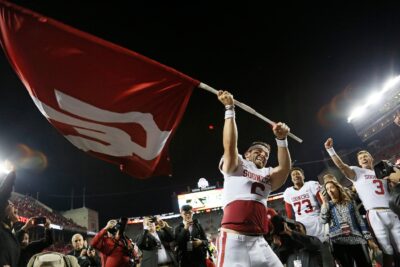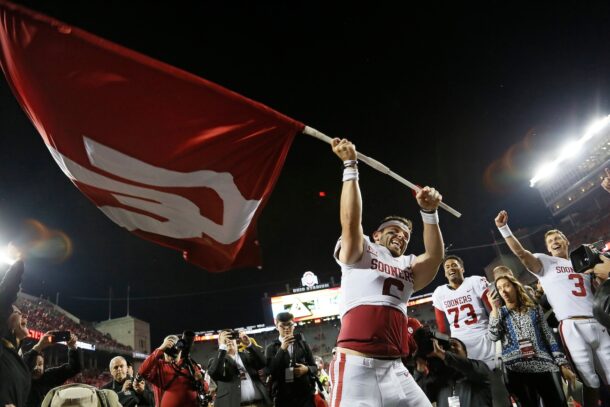SEC schools ranked by combined football and basketball coach salaries
By Ethan Levine
Published:
One year into the SEC’s “Network era” — a chapter of the conference’s history infused with big money thanks to the blossoming SEC Network — the conference’s member schools are spending big on athletics.
Kentucky and Texas A&M are overhauling their football stadiums, and they’re just two of the many schools upgrading their facilities with network money this offseason. And while there was only one head coaching change on the football side of things, there were a number of high-priced coordinator moves (Will Muschamp, John Chavis, etc.) that were almost certainly inspired by network funding.
And the spending doesn’t just stop at football. Four schools changed basketball coaches this offseason, and a conference recently overlooked on the hardwood now claims establishing coaching names like Ben Howland and Rick Barnes thanks to the money the network has already brought in.
But what about before the network’s launch last August? This past academic year may have been the SEC’s last season uninfluenced by network money. The additional funds will only serve to benefit the conference in the short- and long-term, of course, but it is interesting to now look back and see where schools stood financially before the money began rolling in at a greater rate.
Related: SEC head coach salaries 2014
With all this in mind, we took a look back at what SEC schools paid their football and basketball coaches last season to see who was spending the most, where they were spending it and how much constituted “a lot” of spending before the network’s money takes over.
Unsurprisingly, the two SEC teams to claim national championships in the last four years — Alabama in football and Kentucky in basketball — spent the most on coaches, with Nick Saban and John Calipari leading the way in terms of earnings among the coaches in their sport.
But what’s more interesting is how much some schools spent only to finish behind the non-spenders. Florida spent the third-most on coaches, yet reached a mediocre bowl game and missed March Madness to close the hoops season. South Carolina ranked among the top-five spenders in the SEC, yet also barely made a bowl and came nowhere close to the big dance.
Meanwhile, Arkansas shut out consecutive ranked SEC foes on the gridiron, then spent most of the basketball season ranked in the top 25 despite spending less on coaches than most other schools in the league.
Spending will only continue to rise in the coming years as the SEC Network continues to grow, but take a look at last year’s coaching salary totals and enjoy one final token of the pre-Network era.
| School | Football coach | Fball coach salary | Basketball coach | Bball coach salary | Total |
|---|---|---|---|---|---|
| 1. Alabama | Nick Saban | $6.9 million | Anthony Grant | $1.9 million | $8.8 million |
| 2. Kentucky | Mark Stoops | $2.2 million | John Calipari | $6.5 million | $8.7 million |
| 3. Florida | Will Muschamp | $3.0 million | Billy Donovan | $4.4 million | $7.4 million |
| 4. Auburn | Gus Malzahn | $3.85 million | Bruce Pearl | $2.7 million | $6.55 million |
| 5. South Carolina | Steve Spurrier | $4 million | Frank Martin | $2.1 million | $6.1 million |
| 6. Texas A&M | Kevin Sumlin | $5 million | Billy Kennedy | $1 million | $6 million |
| 7. LSU | Les Miles | $4.3 million | Johnny Jones | $1.1 million | $5.5 million |
| t8. Georgia | Mark Richt | $3.2 million | Mark Fox | $1.6 million | $4.8 million |
| t8. Ole Miss | Hugh Freeze | $3.0 million | Andy Kennedy | $1.8 million | $4.8 million |
| 10. Arkansas | Bret Bielema | $3.2 million | Mike Anderson | $1.5 million | $4.7 million |
| 11. Tennessee | Butch Jones | $3.0 million | Donnie Tyndall | $1.6 million | $4.6 million |
| 12. Missouri | Gary Pinkel | $3.1 million | Kim Anderson | $1.2 million | $4.5 million |
| 13. Miss. St. | Dan Mullen | $2.65 million | Rick Ray | $1 million | $3.65 million |
(NOTE: Vanderbilt is a private institution and thus does not have to make its coaching salaries public information.)
A former newspaper reporter who has roamed the southeastern United States for years covering football and eating way too many barbecue ribs, if there is such a thing.







